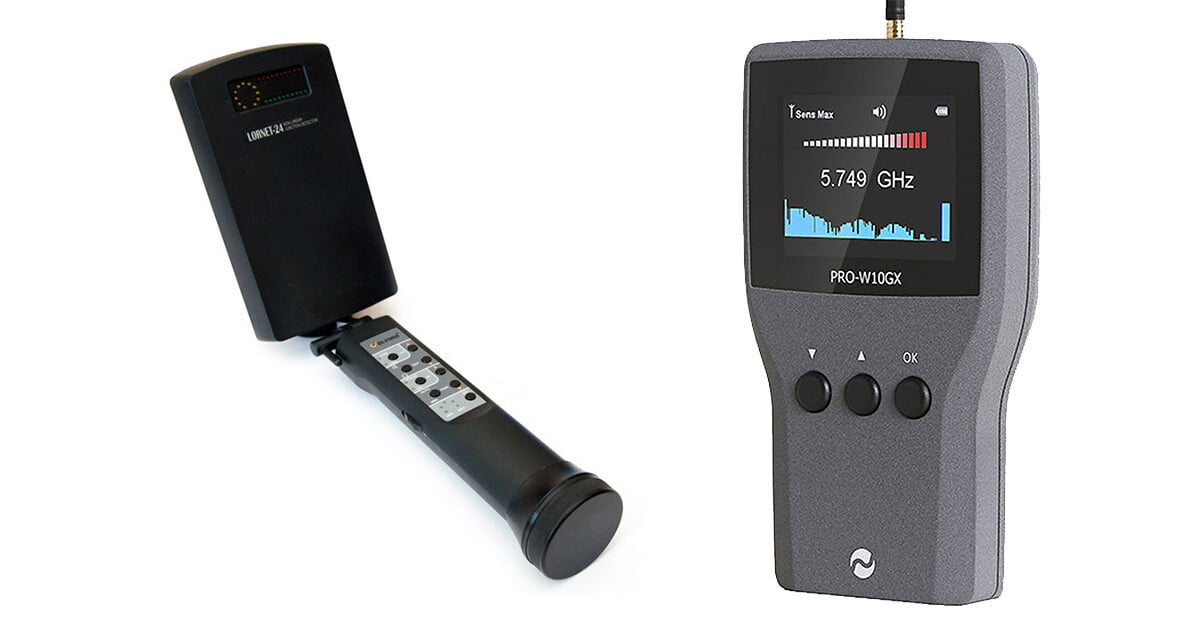
Bug Sweeping
Have you ever wondered if you are being bugged or listened to when you are in a private place, and how to sweep for bugs with a detector or what to look out for with your naked eye?
Firstly, it is important that most of the time there is no bug as very often coincidence or deliberate baiting can cause someone to feel like there is a bugging device, but there isn’t.
For the other occasions where you are sure there is a listening device, follow these steps to be sure.
Selecting the right detector
Now, you will need to invest in a bug detector/RF detector, a detector picks up radio frequencies that are transmitted in the room.
Although you still need a good set of eyes to help find the device, they will certainly point you in the right direction. When looking online you will see they can range from a few dollars, to the price of a new car, so what is the difference?
Without going into too many details it all comes down to what they can pick up and what they can’t.
A good quality bug detector:
- Is generally hand tuned (it is individually tested and tuned for greater sensitivity)
- Has a higher frequency range (It detects more frequencies therefor more devices)
- Has better filters (so you don’t detect false signals)
- Has a sturdy metal case (so it lasts for years)
A cheap detector:
- Is mass produced (and hardly tested)
- Has a lower frequency range (or missing segments)
- Has no filters (so it has lots of false readings)
- Is plastic and will probably not last
Generally, around the $500 to $2,500 is a good starting point for a reliable detector that will serve you well and last you for years.
Now that you have your detector, what next?
Preparing to sweep
To sweep your home or office you will need to prepare the environment, so turn off your:
- WIFI
- Bluetooth devices
- Cordless phone
- Mobile phone
- All other wireless devices
- Ensure nobody uses the microwave oven
Now theoretically you should have zero transmitting devices, so it’s time to sweep.
But before you start, there are some devices that do give a signal, the most obvious is a flat screen TV or monitor as the processor emits a signal, but other devices with processors may also give a reading, like your PC, or laptop, so don’t be too alarmed if you pick up a signal within 20cm of these devices, this is normal and if you unplug them, the signal should stop immediately.
Now it’s time to calibrate your device.
Most detectors have a sensitivity dial or setting and either a row of LED lights or a clicker/buzzer. You need to stand in the middle of the room and turn the dial up full where all the lights are on, and then slowly turn it down until just the last light is flickering, now your device is calibrated to the area.
Starting the sweep
To get the best results you need to understand the nature of the equipment you are searching for, they will be an audio device with a microphone that transmits, so with this in mind you can easily disregard some places with motors as this will make the bug deaf and unable to pick up voices etc., like fridges, air conditioners, heaters, etc. You can also disregard wet places like kettles, drains, etc., as these will damage the device.
Another thing to know before we start is the RF signals are everywhere and they act like rivers or wind, meaning you can be standing in a river of RF from your local cell tower and not be aware. Have you ever had bad reception on your phone and taken one step and its better? This is important to know as these rivers may flow through your premises and you need to have a strategy to overcome the false readings.
And lastly some bugs can only be detected from about 20cm, so you need to check everywhere, under every table, under every piece of furniture, across every inch of ceiling, across every inch of wall.
When sweeping hold your detector and move your arms in arcs, both horizontal and vertical as antennas can act in a polarised manner, just like batteries, if you put a battery in a device backwards, the device won’t work, if your detector antenna is horizontal and the bug antenna is vertical they won’t detect as well and could be missed.
Now slowly and methodically move through the area performing your arc sweeps checking within 20cm of every surface while you search for unauthorised listening devices. As you move around your lights may increase a little here and there, this is normal and nothing to be concerned about as there is signal everywhere.
If you get a stronger signal use the detector to focus in on the position until the lights are all on, then reduce the detectors sensitivity again and keep honing in until you have found the source.
At this point you should be able to take over with your eyes to look at where the device will be hidden, remembering that electronics need power, so it will either be in another electrical item like a power board, double adapter, lamp, etc., or have a noticeable battery pack. Remember that most listening devices need to last several months so if they cannot access permanent power, the battery pack will be quite large, otherwise they will need to enter and replace batteries every day.
What if it is inside a wall, well before you rip off the plaster board, go around to the other side of the wall and walk backwards, if the signal does not disappear, you may be in a river of RF from a nearby radio tower or cell tower. But if the signal does weaken as you walk away from each side of the wall, it may warrant further investigation, or a call to a professional.
During your sweep keep your eye out for unusual things like any of the following:
- Hand marks in dusty areas
- Hand marks around manhole
- Debris on the floor or other areas from drilling
- Light switches slightly moved
- New objects you don’t recognise
- Small black holes in objects that could have a microphone behind them
- Your items have been rearranged
If you have an FM radio, slowly go through all the frequencies and see if you can detect an FM listening device. FM transmitters are very common and possibly the most used due to their low price point.
A sweep for bugs should always include a thorough physical inspection of the room for anything that seems out of place. Items such as light switches, light fixtures, smoke alarms, power points, clocks, exit signs, etc. should be thoroughly examined it see if they appear new or a bit out of place.
